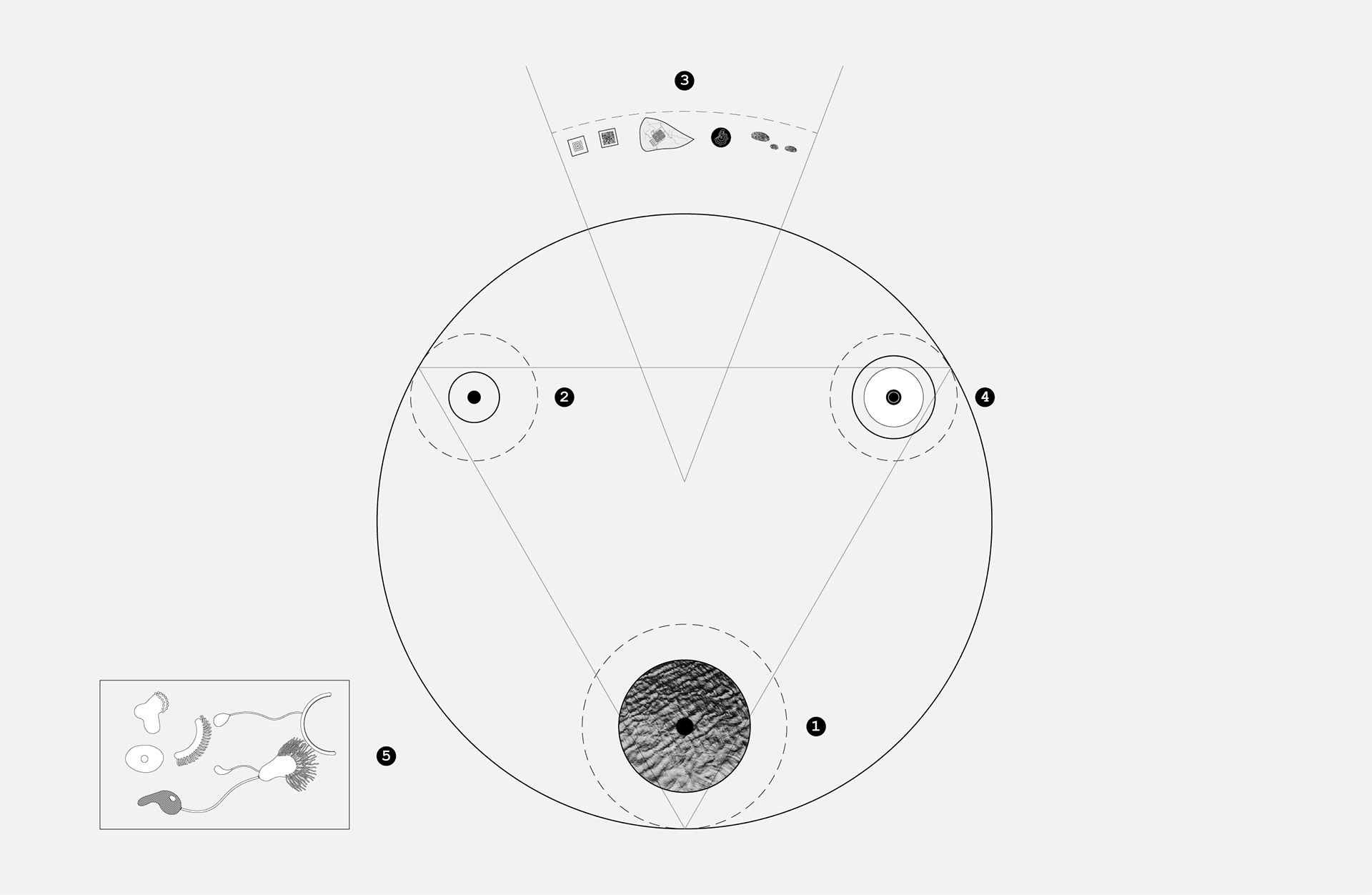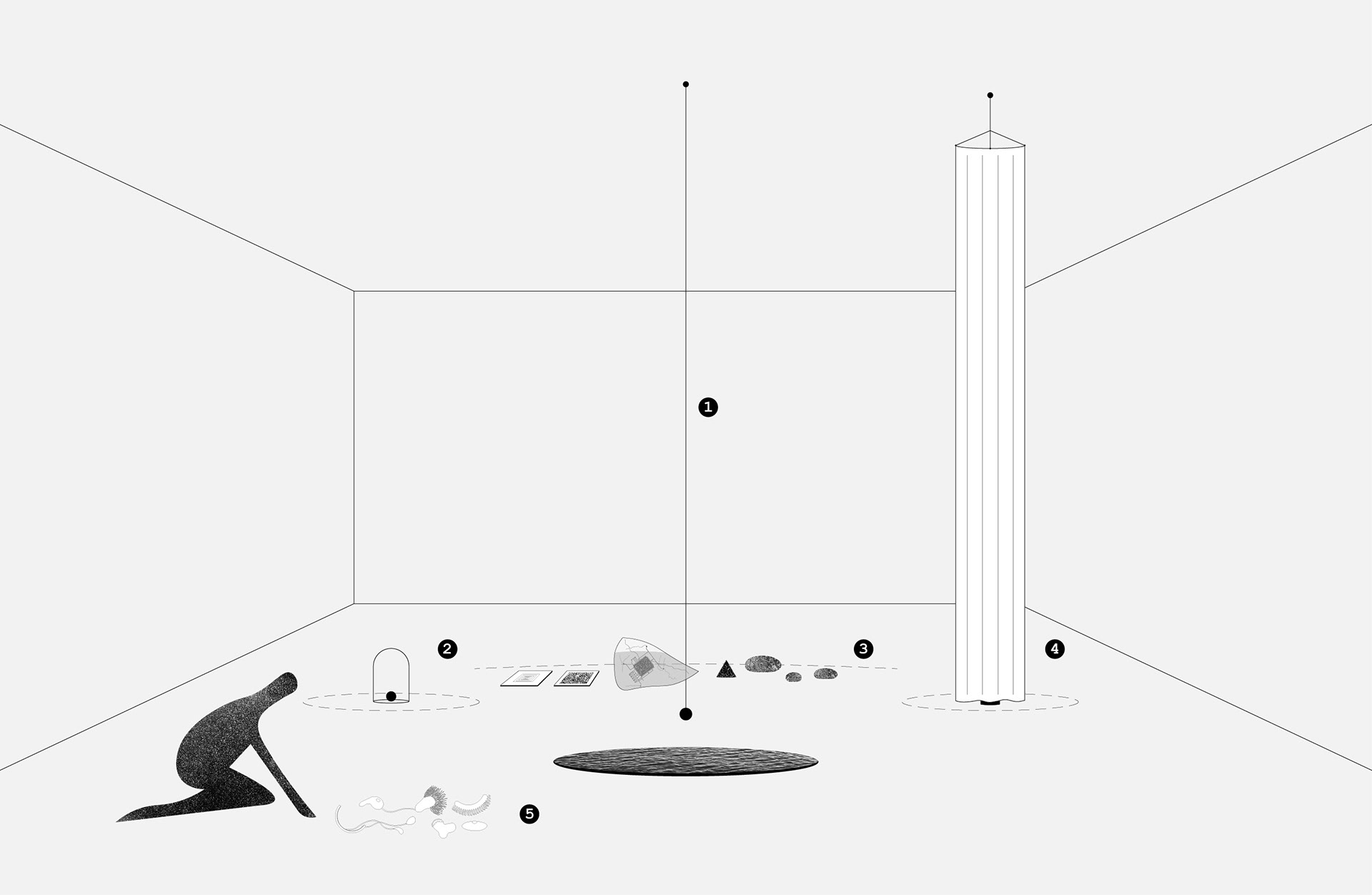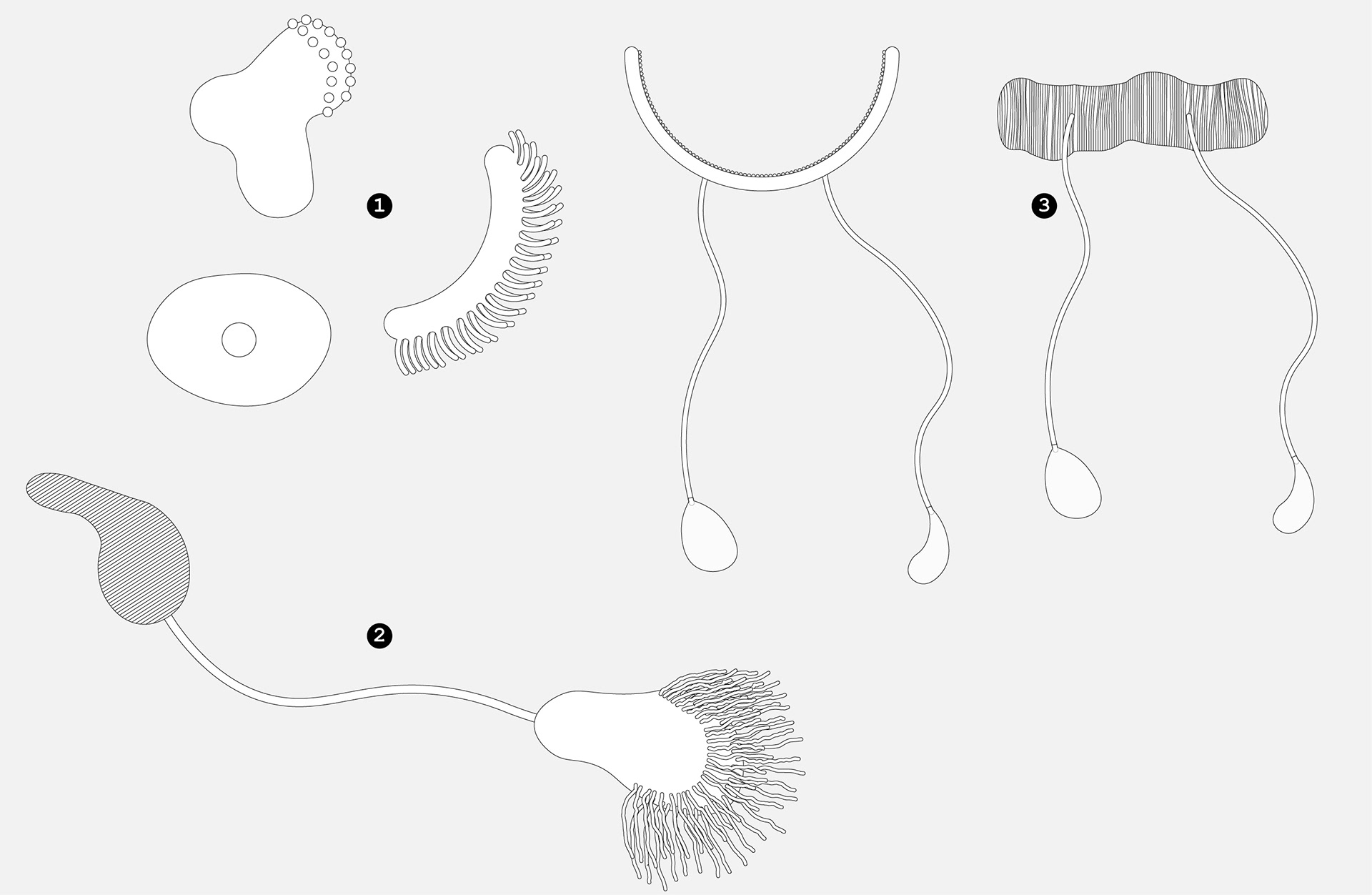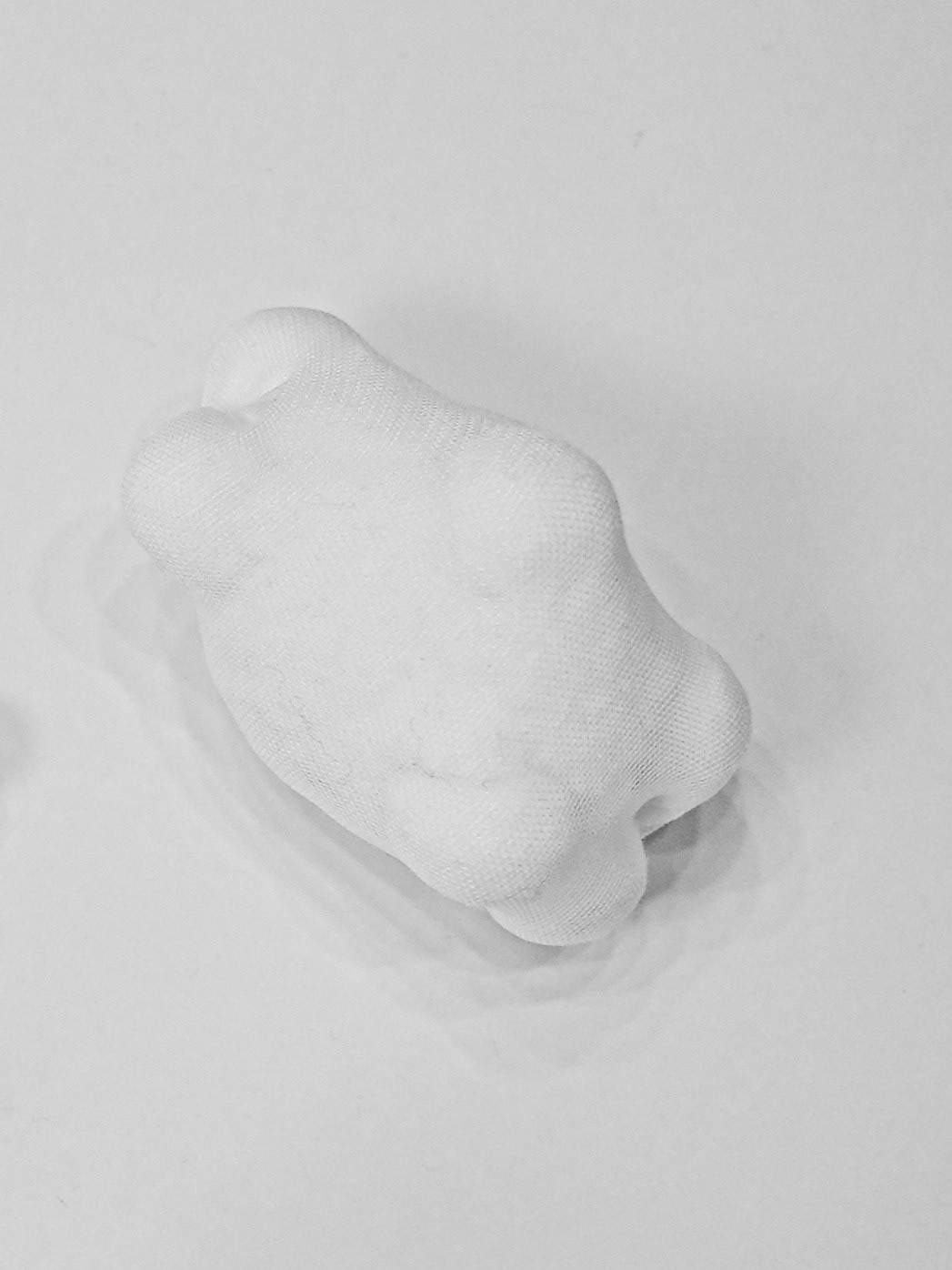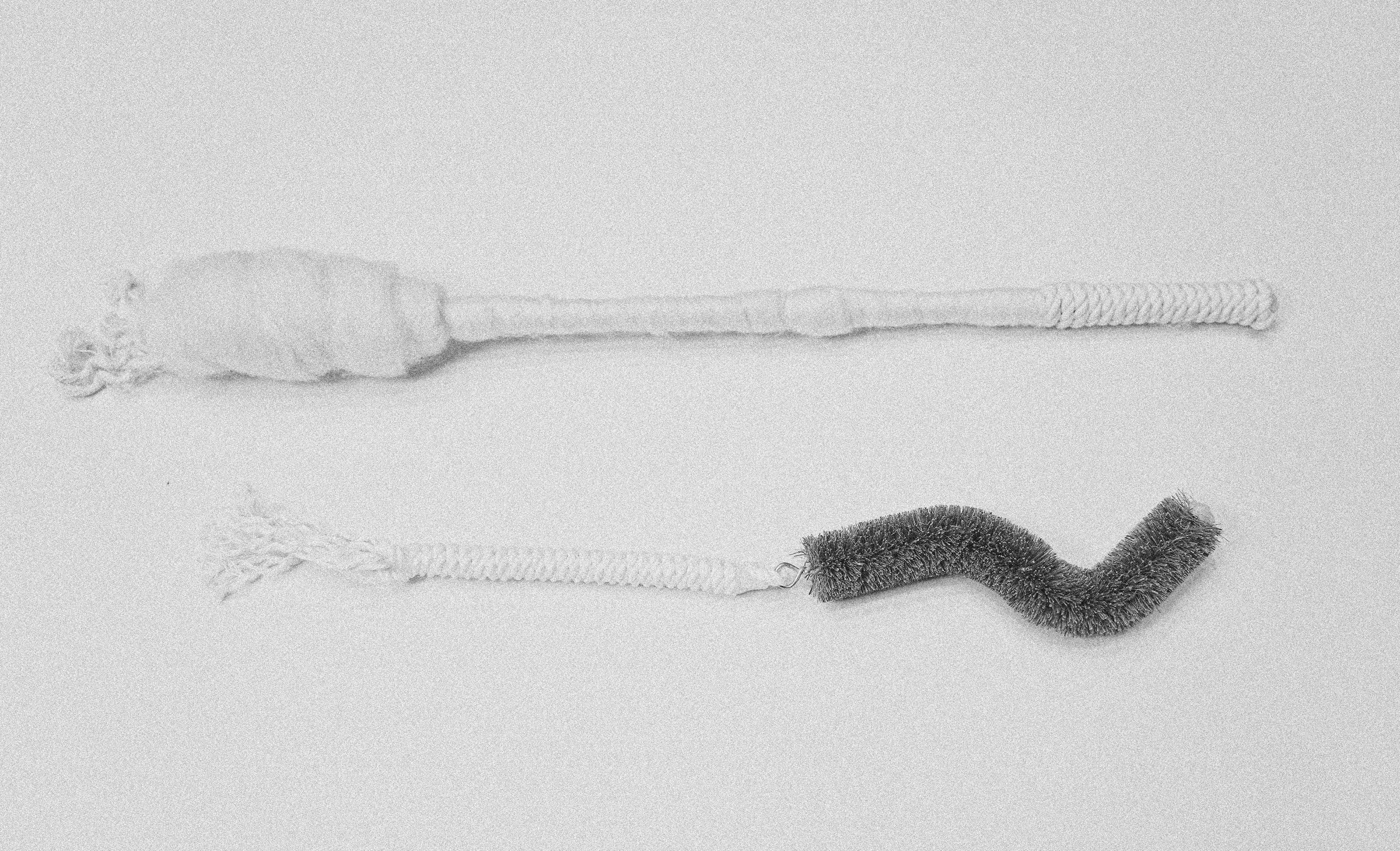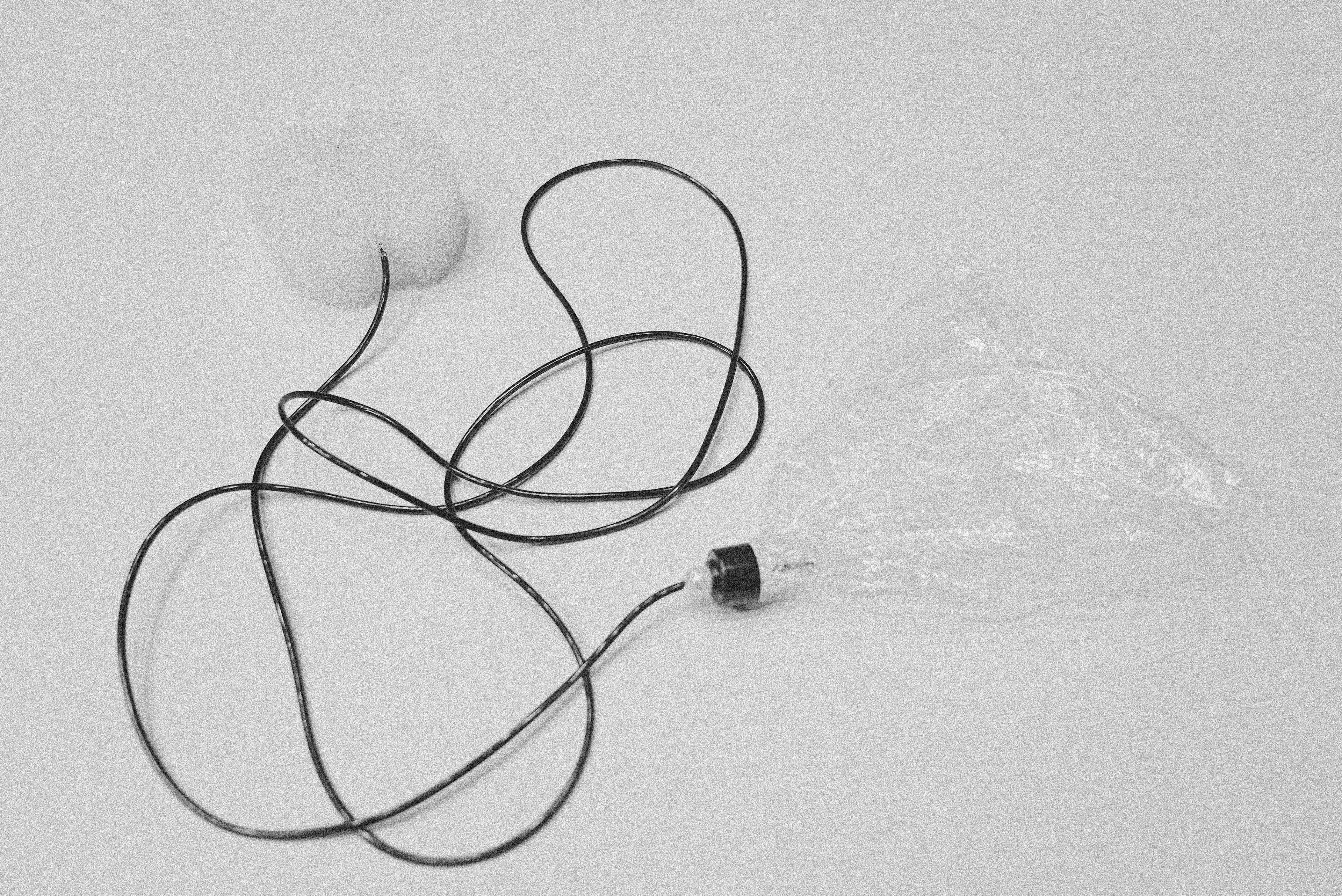RITUAL APPARATUS is a conceptual design idea exploring how intentionally utilizing artifacts with ambiguous interaction affordances can establish a dialogue about technology beyond-the-human. It was embodied through a spatial artifact that combines several elements to simulate a compact heterotopia where a ritual is in the process: "a wake of a technological entity". The Ritual Apparatus elements included ceremonial items relevant to "the culture and the beliefs" of this technological entity (Figures 1 & 2): Radiant Spectra (1), marking the spiritual presence of the entity; Mourning Chime (2), sound sequences of a funeral toll; Relics of Unseen (3), remnants of the entity and their ancestors; Memory Leak (4), soundscape of the entity’s past monologues; and Ritual Instruments (5). The Ritual Instruments (Figure 3) included: Elementals (1), essential ritual objects; Anima Rinse (2), a soul cleanser; and Eternal Drop (3), a teardrop collector, which are probes used for connecting with the "posthumous presence" of the entity. Following the theory of ambiguity of relationship, little guidance and narrative were given for the audience to engage with the artifact in a performance of a "wake" ritual based on their own volition and interpretation.
Ritual Apparatus aimed to produce a story and initiate critical thoughts about our current relationship with technology. Within this spectrum of critical thinking, Ritual Apparatus does not offer a solution to any of the issues humanity faces with technology; instead, it is guided by the assumption that the audience relies on their own cultural, artistic, and design backgrounds to understand it and further develop its meaning. Through this, the Ritual Apparatus generates a new culture, one that intersects temporary imagination with the audience's own preconceived "ritual" knowledge. The assumption was that, in this experiment, thoughts of technology as a co-habitant would arise, rather than the much-established controller-responder relationship.
